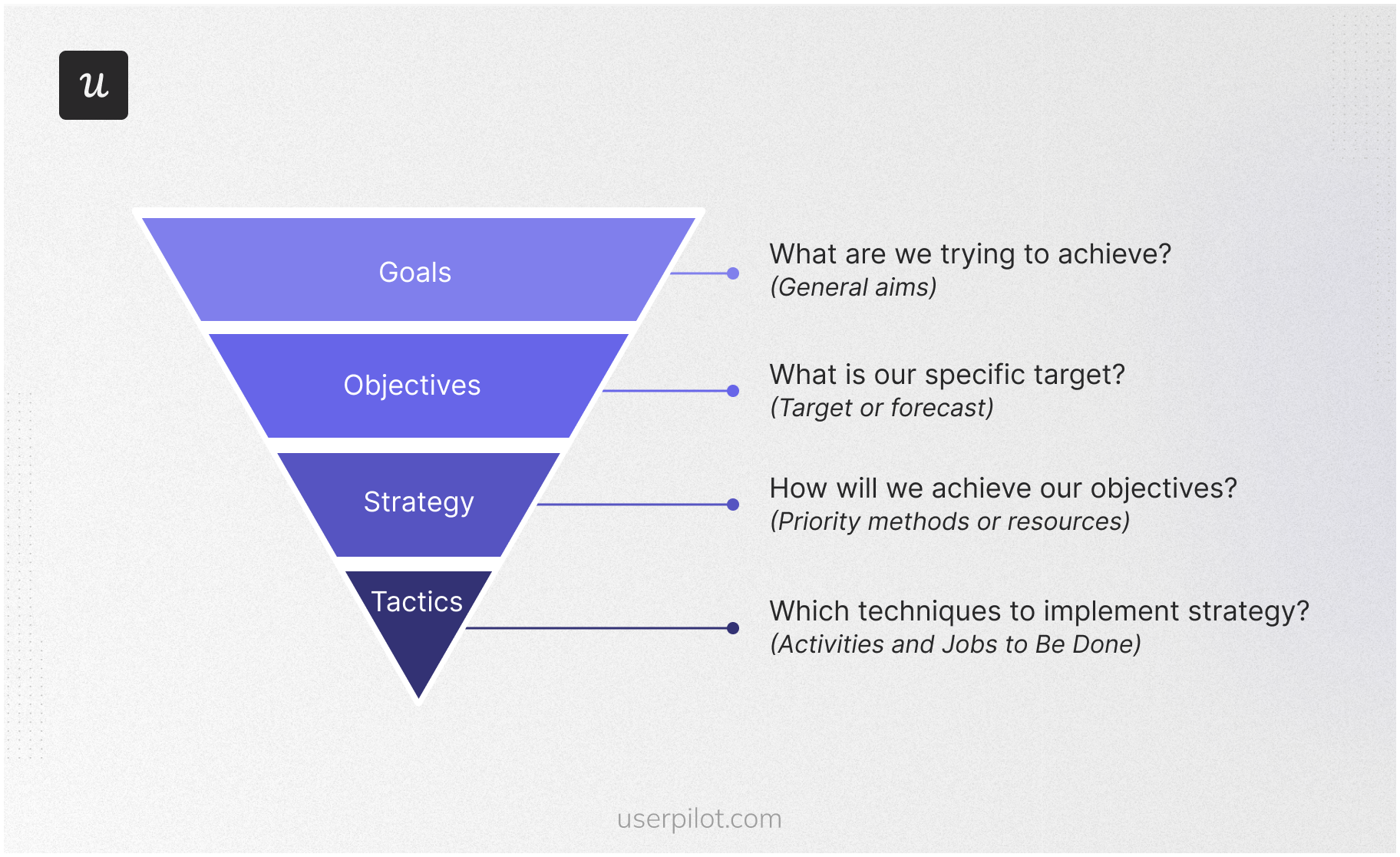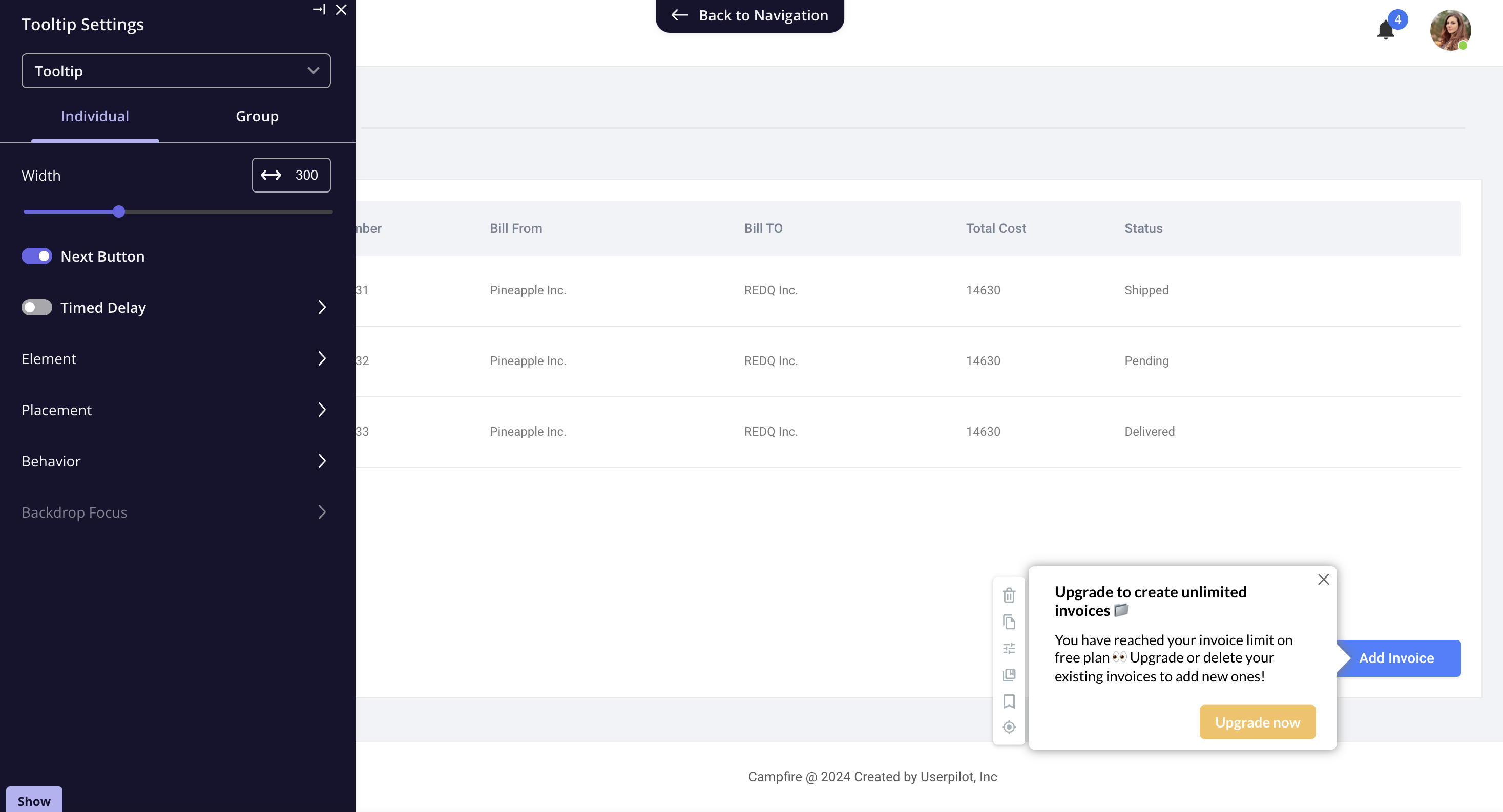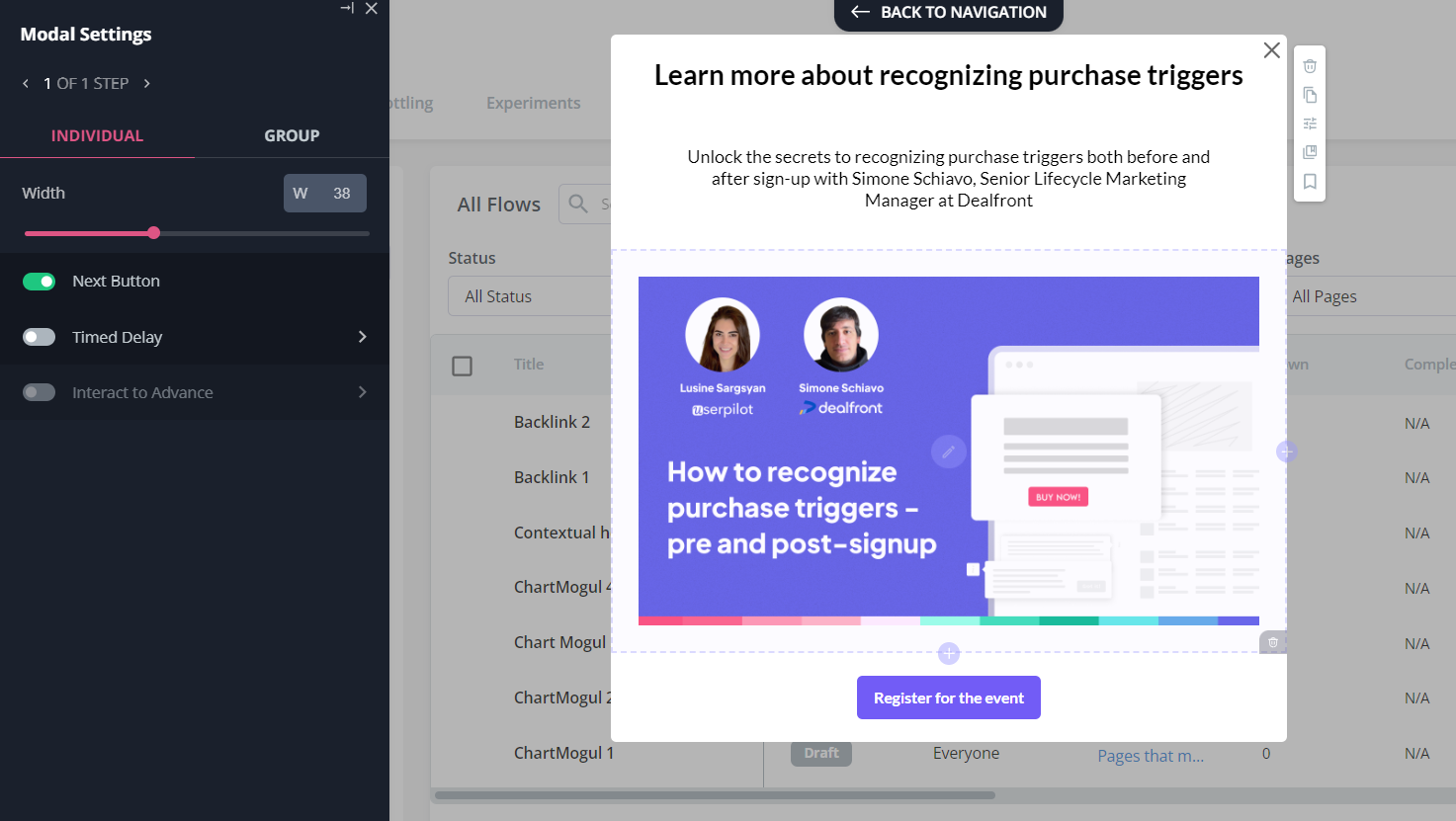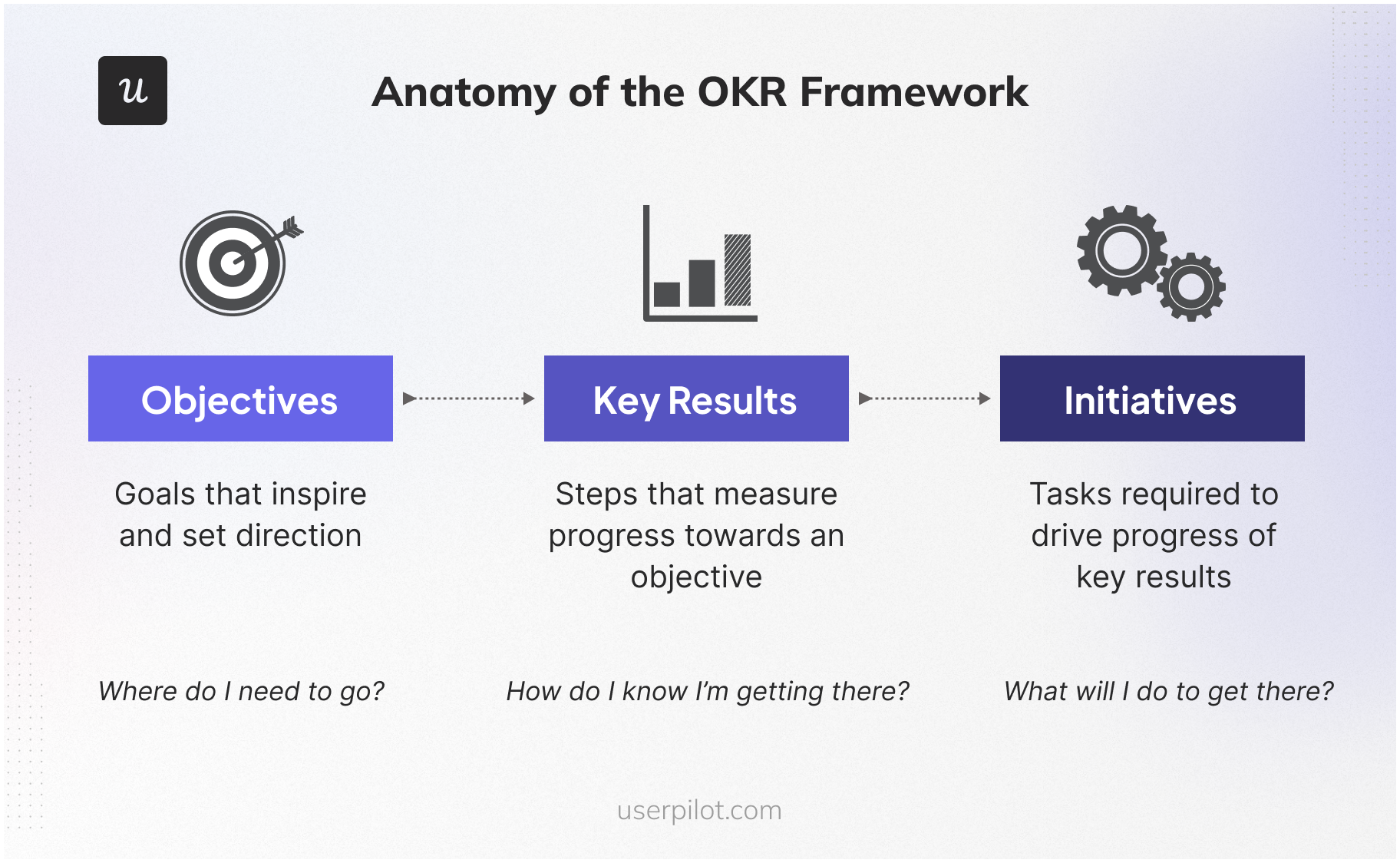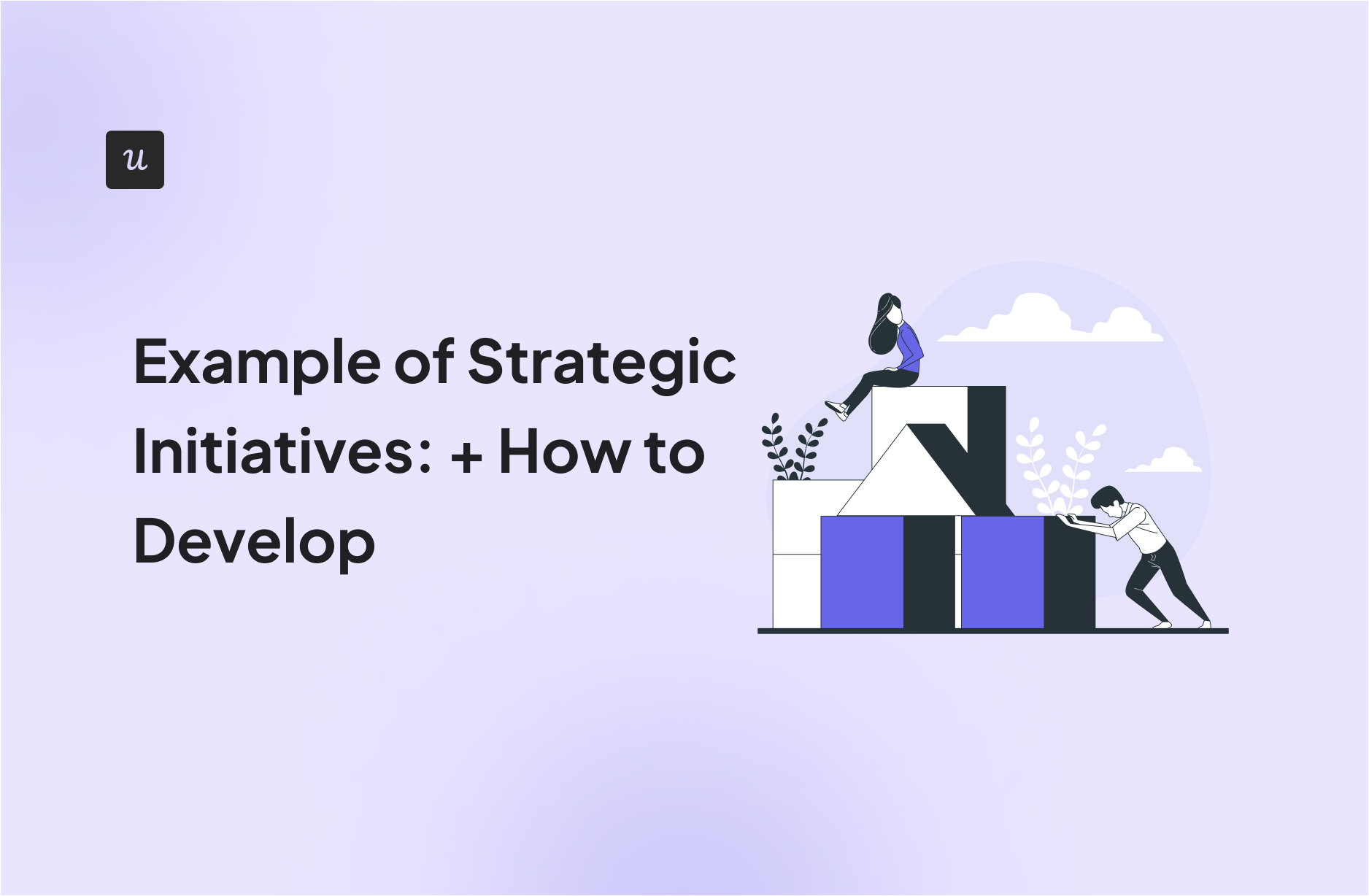
Need an example of strategic initiatives so you can implement them in your SaaS business?
To stay ahead of the competition and drive customer retention, feature adoption, etc, you need to systematically build strategic initiatives and complete them.
In this article, we dive deep into strategic initiatives, their purposes and types, and how you can use them to improve your SaaS business.
Try Userpilot Now
See Why 1,000+ Teams Choose Userpilot

Strategic Initiatives: summary
- Strategic initiatives are a company’s purposeful, long-term activities to achieve larger goals and objectives.
- They help you align capabilities and resources towards a common mission, prioritize the most impactful initiatives, and drive growth.
- Strategic initiatives, objectives, goals, and key results are all important in a company’s strategic plan but have specific differences.
- The most common reasons for failure in strategic initiatives include lack of alignment, focus, and discipline.
- The types of strategic initiatives are build-and-create, defensive, offensive, fix-and-prune, and time-based initiatives.
- You can use examples of strategic initiatives in your SaaS business to improve customer retention rates and drive feature discovery.
- Initiative examples such as using in-app guidance and sending NPS surveys to collect actionable feedback allow you to retain more customers.
- Using tooltips and running webinars to guide customers can help you drive feature discovery.
- You can develop and execute strategic initiatives with the OKR framework.
What are strategic initiatives?
Strategic initiatives (also known as Must Win Battles or MWB) are long-term, purposeful, and deliberate efforts or activities that a company takes to achieve its larger goals and objectives.
Why should you make a strategic initiative?
A strategic initiative is what can help your company achieve its long-term vision. It is an effort that aims at aligning your capabilities and resources toward a common mission and direction.
Strategic initiatives serve as the core foundation for your company’s strategies and play a crucial role in their success. They help you make the most efficient use of your resources by prioritizing the most impactful initiatives.
With these initiatives, you will have a strategic plan and roadmap for continuous improvement and the possible evolution of the market. They will allow you to continuously adapt to changing market demands and always stay ahead of the curve.
Strategic initiatives vs strategic objectives vs strategic goals vs key results
Strategic initiatives, objectives, goals, and key results are all critical parts of a company’s strategic plan. But they have their own distinct characteristics and purposes. It is important to understand their differences to achieve these integral parts of a company’s success.
Strategic initiatives are the big-picture ideas companies create to reach a comprehensive goal. They are broad projects and tasks that support the organization’s overall vision by improving efficiency.
Your strategic goals are also specific long-term aspirations that set the direction for your company. They serve as a guide for decision-making and efficient resource allocation to help you achieve your aims.
Strategic objectives differ from strategic initiatives as they are much more specific, like strategic goals. Each strategic objective is a building block to help you achieve your specific targets. The companies should set their own strategic objectives by aiming to break down the broader vision into smaller, achievable tasks.
Key results are specific and measurable outcomes your company aims to reach through its strategic initiatives. They provide a clear indication of success or progress toward achieving the objective.
But you should be cautious not to confuse it with key performance indicators (KPIs). Otherwise, you might fall into the trap of vanity metrics and key results.
Most common reasons why strategic initiatives fail
While every company wants successful strategic initiatives, many companies often face significant challenges and fail. There can be lots of reasons why strategic initiatives fail. But knowing the most common ones can help you avoid them in the first place.
Let’s see the most common reasons behind the failures of strategic initiatives:
- Lack of Alignment: When an organization’s strategic initiatives are not aligned with its priorities, values, or mission, it can lead to tension and a lack of unity. Employees don’t understand the importance of the initiatives in their day-to-day work. A misaligned strategic initiative can negatively impact the success of the organization. To avoid this, you should prioritize strategic initiatives that align with your company’s values and mission statement.
- Lack of Focus: It is also a common issue that can lead to the failure of strategic initiatives. A lack of focus can occur when a business prioritizes too many goals, causing stress on its resources and employees. When your initiatives’ priorities are unclear or lack definition, It can be challenging to measure and track progress. It then leads to the initiatives stagnating and eventually failing.
- Lack of Discipline: It can be easy to become distracted or take on too many initiatives without proper discipline. It can then result in a lack of follow-through and ultimate failure. Taking on a new strategic initiative that doesn’t fit the company’s strategy might lead to a lack of discipline and project failure.
Types of strategic initiatives
There are various strategic initiatives, each with unique characteristics and a specific purpose. Here are the most critical types of strategic initiatives that you should know about.
1. Build-and-Create Initiatives
Build-and-create initiatives are a type of strategic initiative aiming to drive significant change and innovation within an organization.
These initiatives focus on expanding services, markets, capacity, or geographical reach. They also often involve a large-scale and resource-intensive effort.
These initiatives carry a high level of risk but also offer the potential for substantial rewards if executed successfully. Pursuing build-and-create initiatives can transform your operations and help them grow in new directions.
2. Defensive Initiatives
Defensive initiatives aim to protect a company’s current market position and maintain its existing competitive advantages. These initiatives prevent losses, preserve the status quo, and maintain your existing competitive advantages.
They may involve cost-cutting measures, investments in research and development to enhance existing products and services, or improvements in operational efficiency.
3. Offensive Initiatives
As the name suggests, offensive initiatives are proactive and aim to create a competitive edge for you. These initiatives can involve game-changing solutions, new offerings, or disruptive ideas.
They require a forward-thinking approach and a willingness to take calculated risks to drive growth and success. But they can help you establish a stronger position in the market by benefiting your customers.
4. Fix-and-Prune Initiatives
Fix-and-prune initiatives focus on fixing existing problems and obstacles hindering progress or growth. They are often short-term and immediate.
They aim to address an important issue by making it a strategic priority. The main goal of these initiatives is to clear the way for future success and ensure a solid foundation for future growth and expansion.
5. Time-Based Initiatives
Time-based initiatives are a long-term type of strategic initiative requiring significant resources, talent, and budget.
These initiatives are transformative and intensive and look to bring about major organizational changes. Many call them “moon shots” because they require a significant shift in the organization’s direction and focus.
Time-based initiatives can help you bring about lasting and impactful change, making them a crucial part of any organization’s strategic planning.
Example of strategic initiatives in SaaS
By looking at their example, you can understand the importance of strategic initiatives in SaaS. Let’s see how you can use them to achieve more critical SaaS objectives.
Objective: Increase customer retention rate
The customer retention rate shows how many paying customers you can retain over time. And increasing the retention rate can help you drive revenue and growth.
Here are 2 strategic initiatives you can execute to achieve this SaaS objective.
Initiative example #1. Use in-app guidance to activate customers and keep them engaged
In-app guidance can be a powerful way to retain your customers from onboarding to every later point in the user journey. You can easily guide your users from the beginning by sending in-app tutorials. It will help your users realize your product’s value and reach the Aha! moment in a short time.
Contextual in-app messaging can also be a great way to engage your customers and make them spend more time on your products.
With native mobile SDK, you can create targeted onboarding flows using slideouts, carousels, and push notifications without writing extra code.
There are several ways to implement in-app guidance, including tooltips, hotspots, and modals. These interactive elements can improve the user experience and increase customer retention.

Initiative example #2. Send NPS surveys to identify detractors and proactively avoid churn
You can measure customer satisfaction and loyalty to determine how happy your customer base is with your products.
Sending Net Promoter Score (NPS) surveys and mobile NPS surveys can help you do that easily. In this survey, you will ask your customers how likely they are to recommend your products to a friend or colleague.
The scale can range from 0 to 10. You can categorize respondents into three groups: promoters, passives, and detractors, depending on their given scores.
Those who give you a score of 6 or below are your detractors. They are at a high risk of churning, so you should reach out to them and understand what’s happening before it’s too late.
You can address their concerns and offer them the necessary personalized help. It can help you improve customer confidence and maintain their loyalty to your product.
This proactive approach to customer engagement can significantly impact customer retention rates, leading to long-term success for your business.
Objective: Drive feature discovery
Drive feature discovery refers to the increasing awareness and usage of specific features in a SaaS product. It helps you improve feature adoption and encourage customers to fully utilize your product’s capabilities.
Let’s see 2 initiatives that can help you drive feature discovery.
Initiative example #1. Implement tooltips to drive feature discovery
You can use tooltips as a simple and highly effective customer onboarding strategy. It can help users discover and use your features in a context-sensitive manner.
Tooltips provide customers with a quick and easy-to-understand visual prompt in the form of a small pop-up message. They can also offer hints and tips on how to get the most out of the product.
Your effective use of tooltips to drive feature discovery can help you with customer engagement and experience.
Initiative example #2 Run webinars to educate customers on feature use cases
One of the useful examples of strategic initiatives to drive feature discovery is hosting retention webinars. These webinars serve as a platform to educate customers on the product’s full potential and its various feature use cases.
You can invite users to attend these webinars using modals or in-app notifications. These webinars can be an effective tool for retention marketing, as they offer customers a personalized and interactive way of learning about your product.
It can help increase feature usage and engagement, ultimately driving customer satisfaction and loyalty.
How to develop strategic initiatives and execute them with the OKRs framework?
The OKR framework is an effective goal-setting framework that is widely used.
Key results (KRs) are measurable objectives that help track progress toward achieving an overall goal. And in the OKR framework, initiatives are specific projects or actions you take to achieve key results.
It is crucial to align the strategic initiatives with the key results to use your OKRs and initiatives effectively. You can then give strategic priorities to the work that directly contributes to achieving the key results.
You should also use measurable initiatives to track your progress. It helps you assess your progress and make data-driven decisions about allocating resources and prioritizing future initiatives.
Additionally, you need to align OKRs with the organization’s strategic goals. It ensures that strategic initiatives support the company’s long-term success and contribute to its overall objectives.
You can use the following five key steps to develop and execute strategic initiatives with the OKR framework effectively:
- 1. Determine priorities: You should set your strategic priorities before choosing the initiatives. It will help you invest resources in the most impactful initiatives.
- 2. Create a strategy: While creating a strategy, outline the necessary steps to achieve the key results and the initiatives that will support those efforts.
- 3. Set milestones: The next step is to set milestones. They let you break down the larger goals into smaller and manageable steps. You can then easily track progress and execute the initiatives following a roadmap.
- 4. Track progress: Ongoing progress tracking is essential to assess how well you are executing initiatives and progressing toward the key results.
- 5. Review: The final step is to review and check progress. It involves regularly tracking the execution of initiatives and making necessary adjustments to achieve the goals.
Conclusion
Properly implementing strategic initiatives can help your company reach its strategic vision quickly. And now that you have a better understanding of the initiatives, we hope you start working on them soon.
Want to get collect data on in-app user behavior so you can implement strategic initiatives? Get a Userpilot Demo and see how you can drive product growth.

